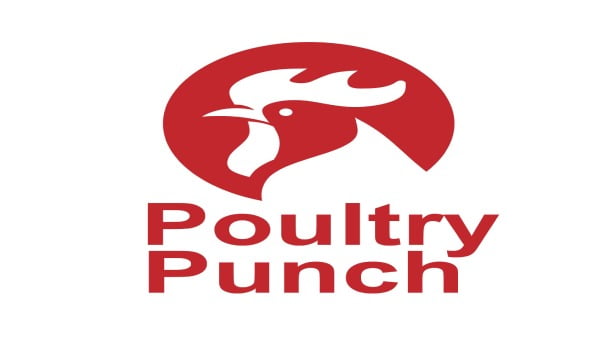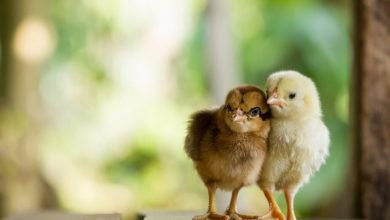NUTRITIONAL MANAGEMENT OF BROILERS IN SUMMER

Dr. Partha Pratim Das
Kemin Industries South Asia Pvt. Ltd.
Physiological & Behavioral Changes
• Ambient temperature for rearing birds is 24 to 26°C. Temperature above that gradually induces stress. Intensity of stress increases proportionately with increase in temperature.
• Gastrointestinal tract (GIT) weight, activity including enzyme secretion, enzymatic activity, nutrient absorptive surface area and villi dimensions are reduced significantly due to intense heat stress.
• Body weight is reduced by approximately 15-20 % with an increase in 10°C than ambient temperature.
• There is 5 % reduction in feed intake for every 1°C rise in temperature between 32-38°C.
Feed Forms & Feeding Methods
• Maintain perfect feeding strategies in summer that includes proper nutrition, good feeding methods & favorable feed forms.
• Finisher feed in pellet form holds good for medium density diets during summer stress. This mitigates unnecessary risk of stroke mortality/ excess morbidity due to non- excess body heat generation.
• In case of high-density diets in finisher phase with high temperature & humidity conditions, sometimes it is desirable to use mash feed or wet feeding to reduce excess heat increment
• Reduced fine % of feed in summer gives better performance, since energy spent for feeding is less
• In overall broiler feeding regime, pellet is more effective during summer stress, since it saves more energy (6%) and time(1/3rd) in feeding when compared to mash.
• Bigger particle size has more water holding capacity leading to less water excretion in droppings, more resorption of water & better cooling effect during summer stress.
• Major part of feeding to be practiced during cool hours (4PM to 7 AM, may vary regionwise)
• Dual feeding program can be practiced with proven results in all stages of broilers (energy rich diets between 9:00 to 16:00 hrs & protein rich diets between 16:00 to 9:00 hrs) during heat stress
Carbohydrate, Fat & Crude Protein Nutrition
• Increased levels of apparent metabolizable energy (AME) by around 30-40 Kcal/Kg diet is ideal to compensate nutrient losses & lower feed intake during summer stress.
• Include minimum/ restricted levels of soluble non-starch polysaccharides (NSP’s) containing raw materials in diet for better digestion & gut retention time and lower gut viscosity.
• It is suggested to include broadspectrum multi NSPase enzyme to extrapolate maximum advantage of wide variety of raw material use and compensate energy losses during stress.
• Increasing fat % in diet will reduce digesta passage time, optimize finished feed energy levels, lower down heat increment, ensure better body cooling effect and improve palatability.
• Heat increment is higher in protein followed by carbohydrates and fats. So, emphasize more on digestible amino acids to reduce excess heat increment & litter ammonia generation
• Dual feeding program can be initiated from day 0 to culling period in heat stress. Substantiate the nutrient requirements with diets comprising of 30% energy rich and 70% protein rich feed.
• Deficiency of arginine and lysine increases heat load which must be taken care of in feed formulations
• Outflow of amino acids increase during heat stress. Ensure supplementation of good quality protein rich raw materials with higher digestibility, alternate protein rich ingredients for improved amino acid balance and optimized feed cost.
• Check for the significantly excess amino acids in formulations that may reduce feed intake
• Additional fortification of lysine, methionine, lysine:arginine ratio will ensure better breast meat yield in summer stress
• Arginine, tryptophan, valine and glutamine are known for their direct/ indirect response to immunomodulation. Ensure that enough levels are present in raw materials or in synthetic form.
• Incorporation of good multi-protease enzyme is most ideal to reduce amino acid variability, protein wastage, litter ammonia and stress. It will balance all essential amino acids, optimize performance and reduce cost of production.
• Digestible amino acids are increased to 3-5 % to compensate losses and reduced feed intake
Vitamins & Trace Minerals Nutrition
• High temperature, moisture and rancid fats speed up the denaturation of vitamins.
• It’s ideal to include vitamin C and vitamin E at 100-200 ppm, and other vitamin levels increased by 15 to 20 % that fulfills the requirements during acute summer stress.
• Manganese (Mn), selenium (Se) and zinc (Zn) plays key role in improving immunity. Ensure additional supplementation of organic trace minerals at 15 to 20 % during summer stress.
• The combination of chromium propionate and vitamin C works in a synergy to combat the heat stress
• Supplementation with vitamin D3 is useful during summer stress to fulfil any deficit of calcium absorption and for better bone mineralization.
Dietary Electrolyte Balance (DEB)
• There is severe bicarbonate ion (NaHCO3) loss during summer stress & respiratory alkalosis. Increase of NaHCO3 in diets are recommended to control the loss and reduce stress.
• Keeping optimum DEB in summer is essential for better feed intake, day gain, feed conversion ratio (FCR), osmotic balance and effective evaporative cooling of body to relieve stress. Increased DEB by 10 to 15% in summer is recommended than winter.
• Use of potassium chloride (KCl), ammonium chloride (NH4Cl), NaHCO3 along with regularly used NaCl will help in attaining desired levels of DEB.
• Electrolytes in cold water improves the feed intake temporarily during summer stress
• Equation for calculating DEB is articulated as follows : (% of Na/ 23 + % of K/39.1 – % of Cl/35.5) * 10,000 Where 23, 39.1 & 35.5 denotes atomic weight of each Na, K & Cl electrolytes respectively and 10,000 is the multiplication factor.
Other Additives
• Nicarbazine and Monensin anticoccidials are not suggested in summer, since nicarbazine decreases tolerance to heat and monensin depresses water intake.
• Use of antioxidants at 30 to 50 % more than normal will be useful in summer.
• Addition of betaine that acts as a methyl donor and maintain osmotic balance of body will be useful as an on-top application during intense summer stress.
• Immunomodulators like 1,3 beta glucans will boost up immunity and improve performance
• Choline chloride dosage may be increased during summer stress to ensure effective utilization of fat & nutrients, prevent fatty liver & partial methyl donor effects.
• Addition of additives having anti-inflammatory activity will be extremely useful to reduce summer stress and improve carcass quality.
• Lysophospholipids with combinations of monoglycerides and synthetic emulsifiers (Lysoforte® Extend) are highly useful to maximize nutrients & fat absorption in body and reduce energy variation
• During heat stress, villi height shortens which leads to less absorptive surface area and thus reduced nutrient absorption. Supplementation of calcium butyrates like ButiPEARL™ Dry at 300g/MT of feed stimulate villi growth and serves as primary energy source for intestinal epithelium.
• Supplementation of superior probiotics like CLOSTAT™ not only reduces the unfavorable changes in indigenous bacterial microbiota but can also improve production performance and immunity by restoring the microbial balance and maintaining the natural gut stability during heat stress.
• Summer with high humidity conditions associated with high moisture grain storage leads to severe mycotoxin challenges in birds. Hence, use potent broad-spectrum toxin binder with proven efficacy.
• Storage of vitamins, enzymes and probiotics in a cooler place of feed mill avoids the efficacy loss due to environmental extremities.
NOTE: References available on request.




